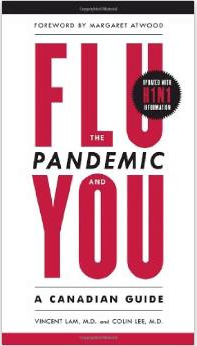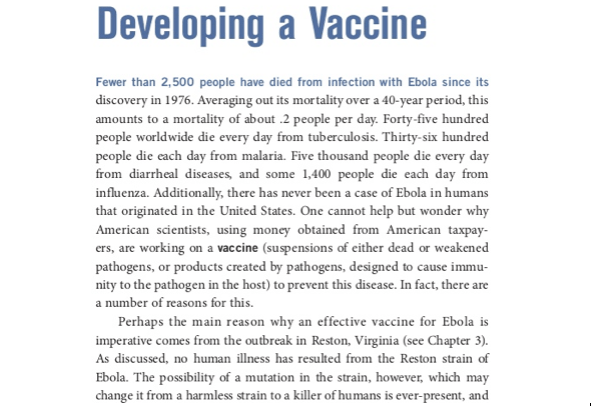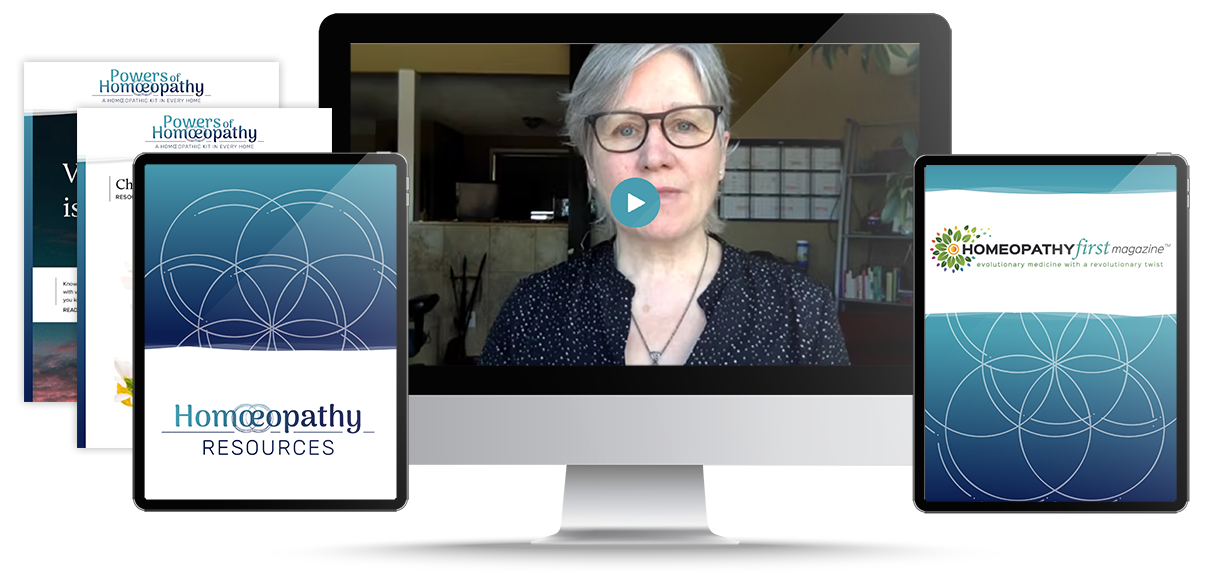Nothing in life is to be feared, it is only to be understood. Now is the time to understand more, so that we may fear less.
~ Madame Marie Curie
Those of us who watch Falling Skies (count me in!), Walking Dead, The Leftovers, and other disaster movies like Contagion see the parallels and possibilities beteen Ebola reporting and apocalyptic fiction. It’s one thing to passively watch TV, quite another to speculate about an outbreak/epidemic/pandemic happening in our comfortable world. Quarantine, vaccines, and viral medications for some but not for others, economic impact, hospitals closed, food shortages… well… if you watch any of the shows mentioned, you have already let your mind ‘go there’!
For the most part, the public is being reassured that the likelihood of Ebola making it to our part of the world is remote. The transmission we are told is body fluid contact only. The big scare is that the virus could mutate and have the potential to pass through air.
Ebola and Influenza
Part 2 of this blog series is the history of Ebola (with thanks to Laurie Garrett’s reporting from the early 1990’s) as well as the notable signs and symptoms of the disease. Last week you received several handouts and today you will have one handout that suggests two homeopathic remedies: Crotalus horridus and China officianalus. Like the conventional vaccine and antiviral medications for Ebola, the homeopathic remedies suggested have yet to be proven in an outbreak.
Today’s handout will take you to some exceptional research by homeopathic veterinarian Irene de Villiers. Irene breaks down the disease’s signs and symptoms, analyzes the information, and makes a suggestion for a homeopathic remedy. This will give you a very good idea of how homeopaths work to find a remedy that matches a disease picture when the disease symptoms are used to differentiate a remedy in an outbreak. It is referred to as the genus epidemicus. Within the genus epidemicus, there may be other remedies recommended where the homeopath sees a sign or symptom that would differentiate it from another remedy. Homeopathy is still able to individualize for the patient’s needs when required.
For those of you who have taken the Vaccine Free: Now What? course, you will very quickly see that the early symptoms of Ebola and other viral infections look very similar to the flu. The only way to differentiate with viral illnesses is often laboratory tests. From my perspective, the outbreak/epidemic/pandemic that is likely to be more real in Canada and the USA is influenza rather than Ebola. Flu virus is airborne and highly contagious. Flu viruses change slightly from year to year, which is why there are new vaccines offered every year. But every so often, the flu virus changes dramatically. Then you have a novel flu virus that the human immune system has never been exposed to previously.
In that kind of situation, there will be a scramble to create a vaccine and antivirals. Some people will receive the vaccines, others will not. The vaccines will not be tested on humans. Those who are sick will be isolated and hospitals will be limited in admissions or closed due to quarantines. Economically, countries will be devastated.
“A pandemic may be a threatening experience, and a legitimate human reaction to threat is fear. Do not be ruled by fear, but try to understand what is happening around you during a pandemic, and make decisions based upon the things that are important in your life.”
~ Dr. Vincent Lam, The Flu Pandemic and You: A Canadian Guide
So, although I am writing about Ebola, please keep in mind that an outbreak of a novel flu virus could be the more realistic scenario to prepare for…and you can prepare for flu with homeopathy. Homeopathy has a successful track record with flu.
“The Flu Pandemic is about that moment- and about any pandemic moment. It’s a calm, practical, and very thorough guide for surviving the alien invasion. Panic is our enemy, knowledge is our friend, preparation in advance is our best line of defense.”
~ Margaret Atwood, foreword to the book The Flu Pandemic and You: A Canadian Guide by Dr. Vincent Lam, emergency physician during the SARS outbreak in Toronto, Canada, 2003
(Just an aside…Margaret Atwood’s book Oryx and Crake is ‘speculative fiction’ about a “not-so-distant future in which a great many people have been killed by a swiftly spreading virus to which no one has immunity.” It’s on my must-buy list!)
History of Ebola
The CDC has a link to a timeline of Ebola fever outbreaks (for those of you who enjoy a bullet-form presentation).
For those of you who would like to read a PowerPoint presentation, here is an excellent one that shows you the history of the relationship between Marburg hemorrhagic fever that first appeared in 1967 in Marburg, Germany and Ebola hemorrhagic fever, which was discovered in 1976. Both viruses belong to the family called Filovirus.
This July 2014 presentation is by Arthur Coleman, biologist and consultant. Much of it is technical with important information on immune system response to the Filovirus infection (for those who like biology and virology).
Signs and Symptoms of Ebola
At the onset of the illness, the first symptoms to appear are:
- Fever
- Chills
- Headache
- Muscle and joint aches
- Tiredness
- General ill feeling
- Symptoms appear suddenly
At this stage, you might think you have the flu (see the connection? Know your home flu remedies and you can cover a lot of viral illnesses).
As the disease progresses you have symptoms of:
- Bloody diarrhea
- Severe sore throat
- Jaundice (yellowing of the skin and white part of the eyes due to the liver being affected)
- Vomiting
- Loss of appetite
- Skin rash that can peel…like a sunburn peel
Severe symptoms include:
- Blood clotting within the capillaries with uncontrolled bleeding
- Shock
- Increased heart failure
- Failure of multiple organs
Coleman’s presentation also discusses the ecology and reservoir of the Ebola virus. Interesting reading for those inclined to be informed when reading stories of how the virus is transmitted. Later in the presentation, he goes through the methods of detection and conventional treatment of the disease. His discussion includes information on the development of a vaccine. As always, my position is that information is critical before making vaccine decisions.
Coleman’s section on developing a vaccine is very good. He points out that:
 Do read more on the vaccine section and the problems associated with it. Very important if there comes a time when an Ebola vaccine is put on the market.
Do read more on the vaccine section and the problems associated with it. Very important if there comes a time when an Ebola vaccine is put on the market.
Also of interest is Coleman’s mention of some other hemorrhagic fever diseases, including Dengue fever (transmitted via mosquitoes). Dr. Sunil Anand and his team of homeopathic doctors in Pune, India analyzed the Dengue fever outbreak using patient cases and came to the homeopathic remedy Tabacum.
Next week I will be returning to my simple life of gardening and using homeopathic remedies for simpler problems like aphids, ants, white flies, and over-watering with icy cold water. Until then, be informed, be prepared, and be in love. I remain…
Yours in health and healing,
Donna




